| Area Of Film Focus | Film 1 | Film 2 | Topic For Comparative study |
| Auteur theory | 2001:A Space Oddyssey | Full Metal Jacket | To what extent does the development of Kubrick’s auteur style rely on his partnership with cinematographer John Alcott |
All posts by Alex
Filters
Notes/ Ideas for Thriller short film
Production role – Editor.
Since i am an editor i will try to show off the skills that i have or will learn using software such as after effects or Premiere.
Firstly it is important to note that i am using soviet montage as a movement influence, i am going to employ a short montage using parallel editing.
It is going to cut between shots of the protagonist and antagonist as well as a few establishing shots.
I would like to shoot at night to help show dramatic lighting and employ a sense of anxiety or worry on the viewer, to show the mystery of what could be in the dark, however since i do not have a multitude of large floodlights to light the exterior i have decided not shoot my establishing shots at night. This is because the camera and video quality would be too low to fit a establishing shot which is supposed to show a clear overview. Therefore i will shoot these in the afternoon / evening and edit them later in either after effects or premiere. However i will also be including a small amount of POV shots. It would make sense for these to be darker / lower quality because humans can’t see very well in the dark anyway and so it would be fitting.
Additionally i am only hoping to do quick shots between the protagonist and antagonist to give it a more dangerous vibe, as if there isn’t much time left for the protagonist to react / save himself. It helps show the speed at which the antagonist is approaching as well.
I am hoping that the use of parallel editing will help the audience to piece together the situation before it happens, therefore i do not have to explicitly show much violence. However not only that but by ending it without a resolution i hope it will leave much to the audiences imagination, therefore captivating the audience into creating their own conclusion to the scene and causes more interest. This could be done by finishing the scene when the protagonist and antagonist meet.
Favourite soundtrack
My Favourite soundtrack / film score is from Avengers Infinity war (Anthony and Joe Russo, 2018) the composer Alan Silvestri also composed music for the other Avengers films and for “Captain America : The First Avenger” (Joe Johnston, 2011) That made him the first composer to score more than one movie in the “Marvel Cinematic Universe” (MCU for short). It first caught my attention because of how well Silvestri builds tension. I will admit it is not the most individual however it feels like a complete classic of this generation. Below is a link to one of the best pieces of music from the film.
Camera Testing
 Establishing shot
Establishing shot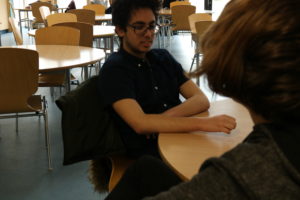 Shot
Shot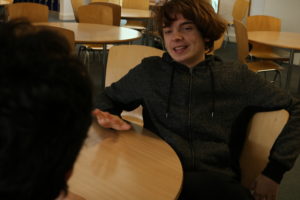 Reverse Shot
Reverse Shot Shot
Shot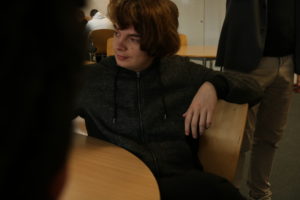 Reverse Shot
Reverse Shot
That was a sequence of shot – reverse shots, it helps show dialogue between multiple – in this case two – people.
Firstly an establishing shot was used to show the scene and introduce the characters, then i went straight onto the dialogue shots.
Additionally i could have used a master shot which is a a film recording of a entire scene – usually a long take – which can also double as an establishing shot.
The Story Of Film, An Odyssey: Part 2
Who were Buster Keaton, Charlie Chaplin and Harold Lloyd and why were they so important?
They were all revolutionary film makers/actors that pushed film to its fullest potential during their time in their field. For example Keaton looked deeply into cameras and how they worked in order to use it to its fullest potential. Lloyd was famous for his scene in The General where he actually blew up a bridge and drove a train into a lake. Additionally because these films were silent, they were able to be shown internationally without the need for translation.
The General 1926 – Keaton as the director
Modern Times 1936 – Chaplin as pretty much everything.
Safety Last 1923 – Lloyd co-wrote the screenplay
Toto – Italian film director that based his films and persona off of Chaplin
Tati – Once gain modeled himself off of Chaplin. Tati was a French filmmaker
Studio Lighting
Here i have an example of the different stages of “3 stage lighting”
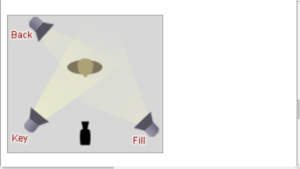
First, before we have any specific points of light added, we have a very flat and uninteresting picture. This is because there are very few shadows being cast that make it interesting.
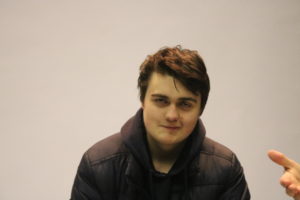
The next stage is to add a Key Light. A key light comes from the front on on side and is the brightest light, that makes it the key light.

After the Key light we need to add what is known as a fill light to soften the image and balance the contrast between light and dark, since the key light is coming from a specific side, it is casting strong shadows over the face and so the fill light counters this by coming from the other side.
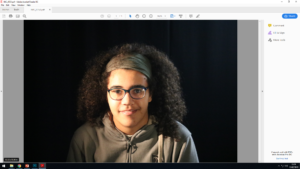
Finally the last Point of lighting is called the back light,it is put behind the subject and it is used to provide a sense of depth and helps separate the subject from the background.
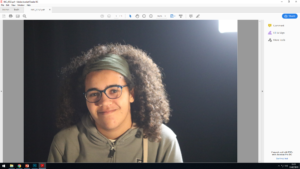
The story of film an odyssey
Part 1
1895-1918
The Lumiere Brothers first film was called ” La Sortie De L’usine Lumiere a Lyon” AKA “The Exit From The Lumiere Factory In Lyon” It was first screened to the public on the 28th December 1895
The Phantom rides were a popular genre of film in Britain and the US towards the end of the nineteenth century. It was filmed by putting a camera at the front of a vehicle and since the vehicle wasn’t in shot it looked like an invisible force was pushing the camera – hence the name “Phantom Ride”.
“The life Of An American Fireman”(1903, George s Flemming) was important because it was the first film to use continuity editing. This was evident when the film would cut between shots inside and outside the house, showing the story at the same time from a different view.
“The Sick Kitten”(1903, George Albert Smith) Was significant because it was the first use of a close-up in cinema history.
The fist film star in film history was Florence Lawrence she was most famous during the early 20th Century and was the first actor to be publicly named.
“Birth of of a nation” (1915, D.W Griffith) was a controversial film because it showed many racist themes – especially showing that the KKK were heroic / “the good guys”
Cousin describes the Danish film industry to be the best in the world because of their ability to construct narratives.
“Haxan” (Benjamin Christensen 1922) A remarkable Danish film that Cousin was very impressed by
Screenplay and Shot List For short thriller
Fade In:
INT. DINING ROOM – Night
On a cold winters night ANTON, sits at the table smiling at something on his phone. Its a series of pictures of him and his friends, they seem to be having a great time.
EXT. NEXT TO ROAD – Night
KRYSTIAN crouches against a stone wall, right next to the gate of the garden he must infiltrate. He looks at his watch then crouches in front of the gate and peers over. After a short while he quickly hops over the gate and into the garden.Then he gets up confidently and starts walking towards the window, round the tree, cracking knuckles and doing a few stretches as he goes.
INT. DINING ROOM – Night
KRYSTIAN’S jump could be heard faintly which perks ANTON’S attention slightly. He looks up from his phone with a slightly confused look on his face. He gets up and looks out the window from behind him, it’s difficult to see outside. All he can see is a few metres in front of him. All the while the steps are dramatically getting louder. Finally ANTON recoils from window as he sees KRYSTIAN approaching. The scene ends in blank slate.
Shot list
| Shot number | Camera/ action | Location | Shot length | audio |
| 1 | MLS Anton swiping through his phone | Dining room | 3 seconds | Tapping on phone, fan hum Atmos music |
| 2 | CU Anton crouching | Next to road | 3 seconds | Car driving past Atmos music |
| 3 | MS Anton turns phone off and puts it down | Dining room | 2 seconds | Phone noises, fan hum Atmos music |
| 4 | CU Anton checks his watch | Next to road | 2 seconds | Car driving past, watch ticking Atmos music |
| 5 | 3 seconds Anton checks message | Dining room | 3 seconds | Phone noises, ticking Atmos music |
| 6 | Establishing shot just of the area where Anton was | Next to road | 2 seconds | Atmos music ticking |
| 7 | MS Anton puts head in hands | Dining Room | 2 seconds | Atmos music Anton sighing |
| 8 | MLS Krystian jumping the gate from behind | Next to the road | <1 second | Atmos music, Krystian’s footsteps ticking |
| 9 | MLS Krystian lands int the garden | Garden | <1 second | Atmos music Krystian landing on gravel ticking |
| 10 | MS Anton lifts his head up and starts to get up | Dining room | 2 seconds | Atmos music Ticking, heartbeat. |
| 11 | Krystian walks towards the house | Garden | 2 seconds | Atmos music ticking, heartbeat, footsteps, torch clicking on |
| 12-21 | Quick alternating MS between Anton walking and looking through the window from inside and Following Krystian approaching from outside | Dining room and garden | Every shot <1 second | Atmos music, ticking, heartbeat, footsteps. |
| 22 | MLS Anton recoils from the window in terror | Dining room | <1 second | Gasp from Anton, Atmos music cuts out, ticking stops, no footsteps. |
| 23 | Blank slate | N/A | 1 second | Fast heartbeat |
Outline for film portfolio
| | Production Role 1 | Production Role 2 | Production Role 3 – Complete Film | ||
| ROLE | Editor | Cinematographer | Sound design | ||
| GENRE (SUBGENRE) | Crime Drama |
Thriller |
Psychological horror | Visual Comedy.
mockumentary |
Haunted House |
| MOVEMENT INFLUENCE(S) | French new wave | German Expressionism | modern visual comedy
|
German Expressionism | |
| PRACTITIONER
INFLUENCE (S) |
none | Edgar wright
Godard |
David Fincher | Godard
Ricky Gervais – “The Office” Nick Offerman – “Parks and recreation” |
Oren Peli (Paranormal Activity) John Krasinski (a quiet place) |
| TARGET AUDIENCE | typically men an women between 20 and 40 |
Action fans |
Horror fans | Families | Horror fans |
| PRODUCTION SCALE | single person crew | single person crew | single person crew | single person crew | single person crew |
| KEY THEMES/ISSUES | crime mystery | Unsafe society | Unstable mental health – hallucinating | hauntings | |
In what way did Godard consciously challenge the established conventions of cinematography and editing
Breathless (Jean-Luc Godard, 1960) is crime/drama that follows a little thug who considers himself to be a suave bad guy – an imitation of Humphrey Bogart.
Jean-Luc Godard used many different techniques that challenged the conventional ways of cinematography and editing.
For example, one of the most important uses of cinematography and editing is the jump cut. A jump cut is when multiple shots of the same scene are put together with to give a jumping movement effect. The camera usually has hardly moved. This breaks the 30 degree rule. The 30 degree rule states that different shots of the same subject must vary by 30 degrees relative to the subject, however jump cuts do not follow this rule. Godard consciously chose to use jump cuts because he knew it would seem abnormal and different. He chose to challenge the conventions of cinematography to separate his film from others. This is seen in multiple scenes, for example when Michele and Patricia are driving in the car. The camera angle is shot from Michele’s perspective, additionally since his voice is constantly being played over the jumping cuts it causes the audience to feel as if they are Michele. Additionally, the use of jump cuts creates a compressed video for us. As if it is showing us highlights of the conversation. The change of background in the jump cuts creates a disjointed feeling, once again this was used to separate “Breathless” from ‘Normal’ cinema.
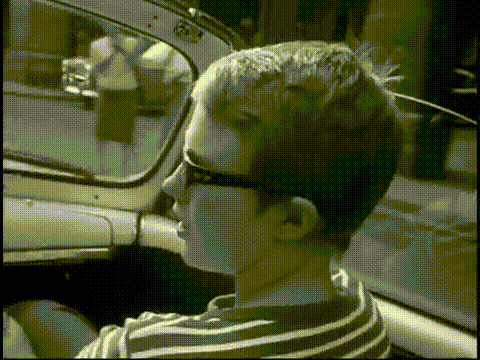
Not only that, but Godard did not use any sets for the movie. All the filming was done in France. This mean Godard was free from the studio – he had no constraints holding him down. This was done largely to reduce the cost, Godard did not have a lot of money, therefore he had to compromise in many aspects. Additionally the film was supposedly shot silent with a sound team adding it in later on. This meant that Godard did not have to worry about artificial lighting or noisy cars. He had a lot freedom for creativity.

Another very obvious difference in the film is that it was filmed completely in black and white. Godard did this mostly to reduce costs as colour film was very expensive however it challenged a few conventions because in 1960 nearly all films were being created in colour. This separated Breathless, it showed that you could have a proper film with a narrative with no set, no expensive lighting and no colour. It proved that it was purely up to the directors creativity and the actors portrayal of the character that made the film how it was supposed to be. For example: this is quite sensual scene and therefore it would make sense to represent this with coloured lighting like a passionate red or a sombre pink. However by shooting the scene in black and white he challenged the norms and Godard was able to establish himself as an impressive film director. Once again it showed off his talent because he was able to convey effects and senses and tones in other ways. Such as through the actors or through the editing.
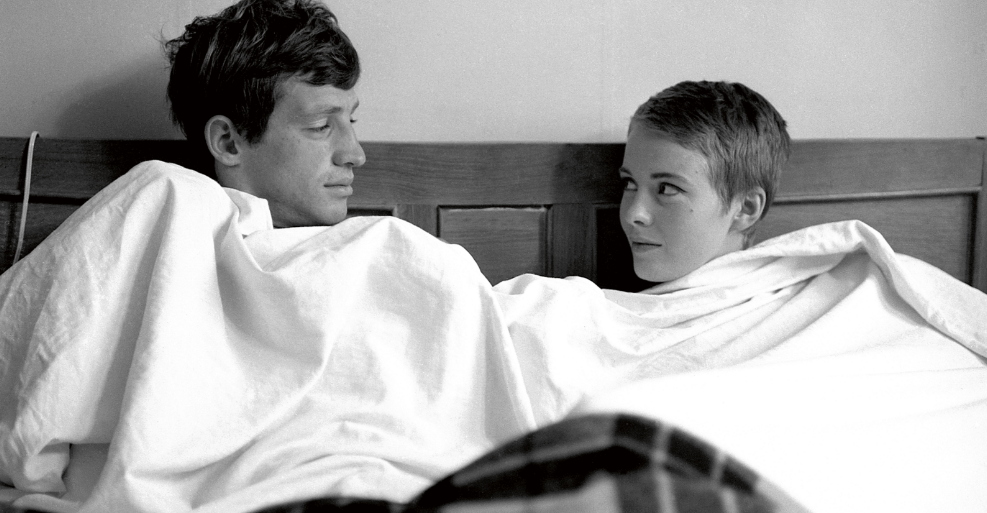
Another important aspect to consider was the time it was created. At the time the Algerian war was happening. Godard moulded “Breathless” into an expression of freedom from the constriction and regiment the war was placing on the French society. The techniques like handheld cameras which are key aspects of french new wave cinema were used metaphorically to show unpredictability and freedom of movement. It was through this that Godard was able to counteract the depression and dark tone the war had set of France. From the start of the film showing him fighting back, killing the policeman that was chasing him, getting involved in gangs. It all represents the individuality of France as a society. Godard wanted to give the people something to inspire them in this dark time.
Additionally “Breathless” played a huge part in French New Wave cinema as is responsible for inspiring countless directors, most notably Quentin Tarrantino. Godard inspired other movies to be reflexive. It made the audience realise they were watching a film. Breathless was reflexive in the sense that it borrowed aspects from other genres and movies and melded them together, and yet Godard did not hide it like most directors try to. Godard was openly announcing the foundations of his work, acknowledging how his work was based of the work of his predecessors. This action of being reflexive in this sense became a safer risk to take and is seen in many other directors work.
